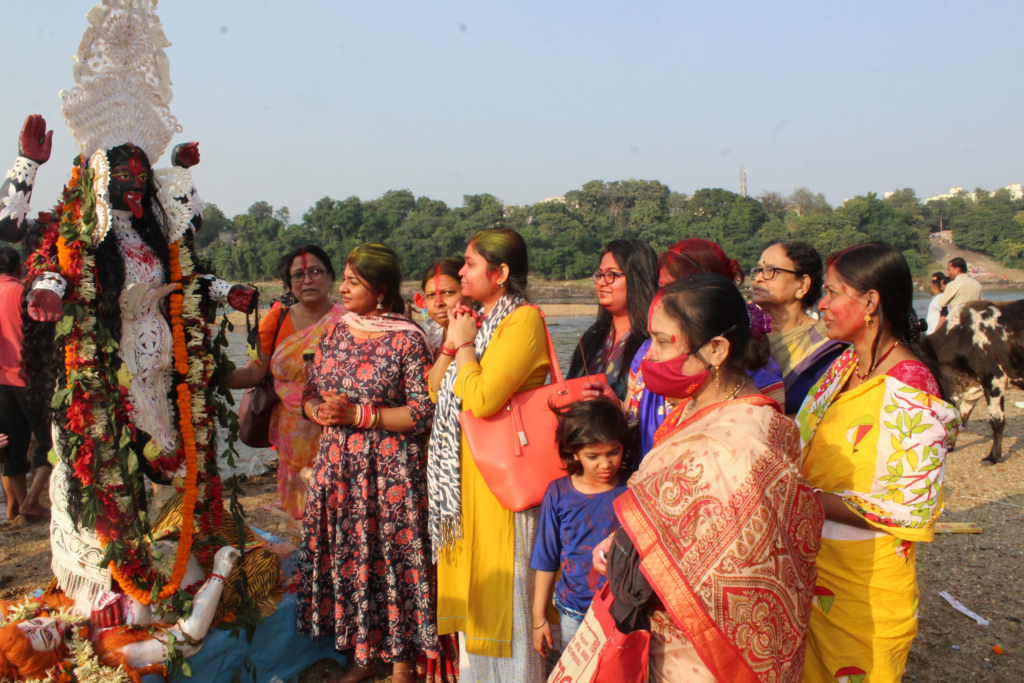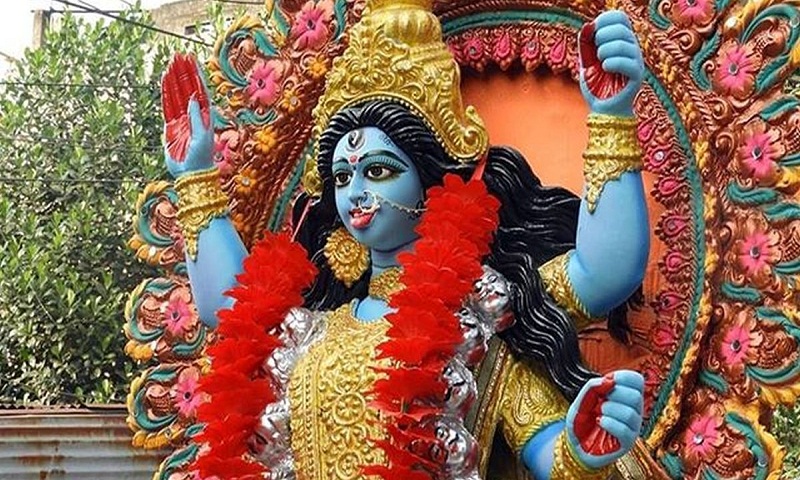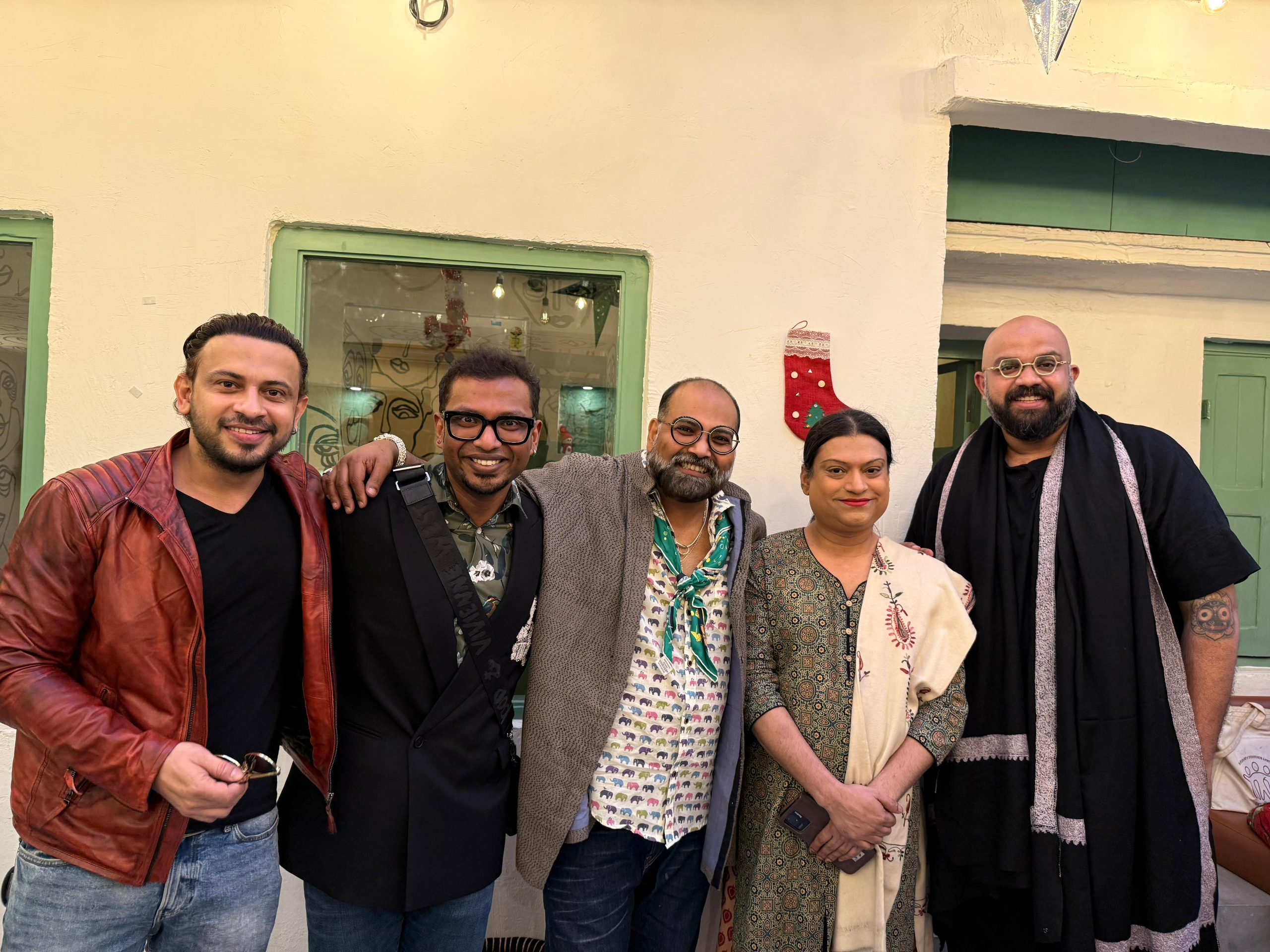Durga Puja, one of the major religio-cultural festivals of India and the larger South-Asian diaspora is celebrated in the month of Ashvin as per the Hindu calendar, corresponding, roughly to the months of September-October.
The nine-day festivity, also called Navratri in Western-India, culminates on the tenth day of Dussehra, as the Goddess returns to her home and husband, Lord Shiva. Her nine day departure from her marital home is celebrated in her natal-home with a religio-emotional fervour that consumes the country in an electrifying celebration. While men and women are both enthusiastic participants in this larger than life festival, often, women take the lead from participation to organisation.
In fact, Durga and Kali, over the years, have transformed into a metaphor for celebrating women empowerment. While the invocation of a powerful-warrior like goddess as an archetype of women empowerment on the surface seems revolutionary, and in many ways it is, the realities of this invocation are compounded by the creation of even more oppressive structures for women — on one hand, they are supposed to embody the traits and manifestation of Shakti and yet on the other hand, in this manifestation, when they encounter obstacles, it is dismissed as not structural in nature but as specific to the dissenting woman.
Each woman must fight her own Mahisasur and emerge victorious. Society only is a spectator to the unravelling of this great war — for it either coronates the win by telling the woman, “Tum to Shakti Ka Roop Ho” (You are the embodiment of the divine feminine itself) or rebukes her for falling short by reminding her that, “Aurat Shakti Ka Roop Hoti Hai” (Women are the embodiment of the divine feminine itself.) On structural traps, society is a diligent bystander.

What glass ceiling? Have you ever seen one?
Read that headline again. Now turn your memory back to Four More Shots Please!, the hit show (albeit with its own set of problems) on Amazon Prime. It reminds us, is patriarchy even real? Episode Two of Season 1 opens to a posh, up-market Bombay restaurant, where the air is filled with an intellectual fervour and a “feminine” faith in one’s ability to excel. It is a luncheon of women achievers presided by Uma, who concludes her speech, to the adulation of most women sitting in the restaurant by noting: “After all, who has created these glass ceilings? We did. Us. Women. We feel we cannot break the glass ceiling. But if you think there is no glass ceiling, then sky is the limit.”
Assuringly, Uma’s blindness and privilege are confronted by Damini Roy, one of the protagonists of the show who asks, “You really think women are hallucinating, and that there is a glass ceiling?” Uma’s reply is telling of how society thinks of structural issues that institutionalise women’s oppression by noting, “All I am saying is that one needs courage to be successful, not excuses.”
The deification of women by invoking comparisons with the divine serves a dual purpose: it creates a very high and a very narrow, slippery pedestal for women to stand on and be appreciated, and on the other hand, as we have seen, absolves the society and state of any responsibility to work towards addressing institutional and structural biases
It is precisely this premise which plays out in multiple variations that present the problem about resting the story of women’s empowerment and success on the foundations of their own courage and resilience. It infantilises structural obstacles like intergenerational cycles of women’s marginalisation, unfavourable access to health, education and opportunity due to engendered child-rearing habits and greater vulnerability to sexual and domestic violence.
The World Economic Forum (WEF) in its 2022 report on Global Gender Gap has noted that based on the trends of the global average scores for each sub index over the past 16 editions for the constant sample of 102 countries, at the current rates of progress, it will take 155 years to close the political empowerment gender gap, 151 years for the economic participation and opportunity gender gap, and 22 years for the educational attainment gender gap.
The time to close the health and survival gender gap remains undefined as its progress to parity has stalled. Notably, within South Asia, regional performance on the various sub-index ranked the worst, with only 62.3 per cent of the gender gap closed in 2022. This lack of progress extends the wait to close the gender gap to 197 years.
Also read: Understanding Durga Puja: The Sanskritised, Political Version

One of the most notable takeaways from the same report is the acknowledgement that issues faced by women in the work-place and the economic sector are a consequence of structural and institutional barriers.
The WEF notes, gender gaps in the workforce are driven by long-standing structural barriers, socio- economic and technological transformations, and economic shocks. While it acknowledges that more women have been moving into paid work and leadership positions, yet globally, societal expectations, employer policies, the legal environment, and the availability of care continue to play an important role in the choice of educational tracks and career trajectories.
The comparison of women with Parvati, the sacrificial mother, Laxmi, the devout wife, or Savitri, the ideal daughter, while on prima-facie seems alluring, it is a deeply flawed pedestal to be put on. For starters, it imbues humane women with human desires and needs with divine and superlative qualities of sacrifice, resilience, devotion, and love. On the other hand, while it affirms them with all the purified and non-threatening qualities of goddesses, it strips them of ferocity, autonomy, and exercise of choice associated with the goddesses, particularly Kali
There is a predominance of women within certain sectors of employment over others. One reason is the limited terrain on which women can work for employment while finding the balance between employment and managing gendered societal expectations like taking care of children, ageing parents and running the household.
Financial dislocations such as the 2008 global financial crisis led to the arrest of growth in sectors that provide the core of social infrastructure, affecting outcomes for families and primary caregivers, often women, during the pandemic.
Similarly, geopolitical conflict and climate change tend to impact women disproportionately. Clearly, it would take Herculean strength for individual women to counter sexism at work, and misogyny in private and public spaces, while fighting the twin monsters of global wars and climate change. Despite, they would still fall short of energy.
There is a much simpler way around it: denial. All we need is to jump on the bandwagon of climate-change deniers and misogyny non-believers, and if we just shut our eyes tight enough, geopolitical conflicts will vanish into thin air too.

The deification of women: The perfect trap for failure
The deification of women by invoking comparisons with the divine serves a dual purpose: it creates a very high and a very narrow, slippery pedestal for women to stand on and be appreciated, and on the other hand, as we have seen, absolves the society and state of any responsibility to work towards addressing institutional and structural biases.
The comparison of women with Parvati, the sacrificial mother, Laxmi, the devout wife, or Savitri, the ideal daughter, while on prima-facie seems alluring, it is a deeply flawed pedestal to be put on. For starters, it imbues humane women with human desires and needs with divine and superlative qualities of sacrifice, resilience, devotion, and love. On the other hand, while it affirms them with all the purified and non-threatening qualities of goddesses, it strips them of ferocity, autonomy, and exercise of choice associated with the goddesses, particularly Kali.

A dramatic retelling of these sanctified versions can be seen in the works of Meena Kandasamy, who writes in Ms. Militancy: “My Kali kills. My Draupadi strips…All my women militate. They brave bombs, belittle kings, take on the sun, take after me.”
Her invocation of the militant, dissenting and revolutionary spirit of goddesses is what is lost in the brahminised and highly purged symbolic invocation of Durga’s avatars when reminding women of their resilience, duty and courage.
As the Pujo comes to a close, it is worth pondering that while many women are reminded to be the “Laxmi of the house”, “Sita to her father”, “Parvati to her children” and “Savitri to her husband”; very few women are allowed to be Kali: to live life with a thunderous ferocity and unassumingly carve a sphere of autonomy for themselves. Brahminical patriarchy works rather mysteriously.
Also read: No One Asked The Caste Question – When Video Of Female Priests At Durga Puja Went Viral
About the author(s)
Harshita is a public policy consultant working at the intersection of gender, climate change, and disability. An alumna of Jesus and Mary College, University of Delhi, and the Institute of Development Studies, University of Sussex, her work draws on her training in History and Development Studies to unpack gender as a social and structural construct.





Shulamith Firestone- ‘To be worshipped is not freedom, for worship still takes place in someone else’s head, and that head belongs to Man.’